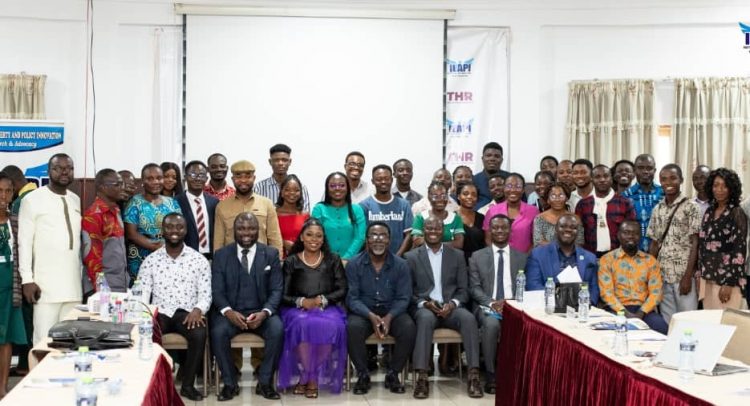Participants at the event
Stakeholders across the country have called on government to put in place stringent measures to address the use of cigarettes due to its health risk.
Speaking at a roundtable forum in Accra on the topic, ‘Domesticating the Swedish Approach for Smoke-Free Society’, the Executive Director of Institute for Liberty and Policy Innovation (ILAPI), Peter Bismark Kwofie, said although the Food and Drugs Authority (FDA) has made efforts to reduce the indiscriminate use of cigarettes, more needs to be done to achieve a smoke-free society by taking lessons from Sweden.
He said a primary approach adopted by the World Health Organisation (WHO), in its 2019 annual report, said the best way to address the cigarette menace is the promotion of cessation.
Mr. Kwofie indicated that tobacco smoking is killing more than 8 million people among 1.1 billion smokers, with African countries accounting for about 8.4% and projected to increase in future.

“We are gathered under this giant structure as experts, stakeholders, and individuals to intellectually beat the drums for regulatory authorities in the space to start considering the science and innovations of harm reduction and laws of protecting consumer choice.
“We must contextualise and domesticate this modern approach which Sweden has embraced to save lives,” he added.
A medical doctor, Dr. John Tengey, for his part also highlighted the need for government to adopt the Swedish approach in order to reduce the effects of tobacco on people’s health.
He said, “Sweden’s support for harm reduction strategies led to substantial public health benefits emphasising accessibility, acceptability and affordability of safer nicotine alternatives with significant decreases in smoking-related diseases.”
He, therefore, suggested that any country that aims to fight cigarette use should consider adopting Sweden’s approach.
Tobacco use is a main risk factor for non- communicable diseases, cardiovascular disease, diabetes, cancer and chronic respiratory disease.
By Ebenezer K. Amponsah


